The Complete Guide to Interior Design: Transforming Spaces in 2024
Interior design artfully blends form and function, transforming spaces into harmonious environments that delight the senses and serve practical needs. This comprehensive guide explores the principles of interior design, its applications across various settings, and the latest trends shaping the industry in 2024.
1. Fundamentals of Interior Design
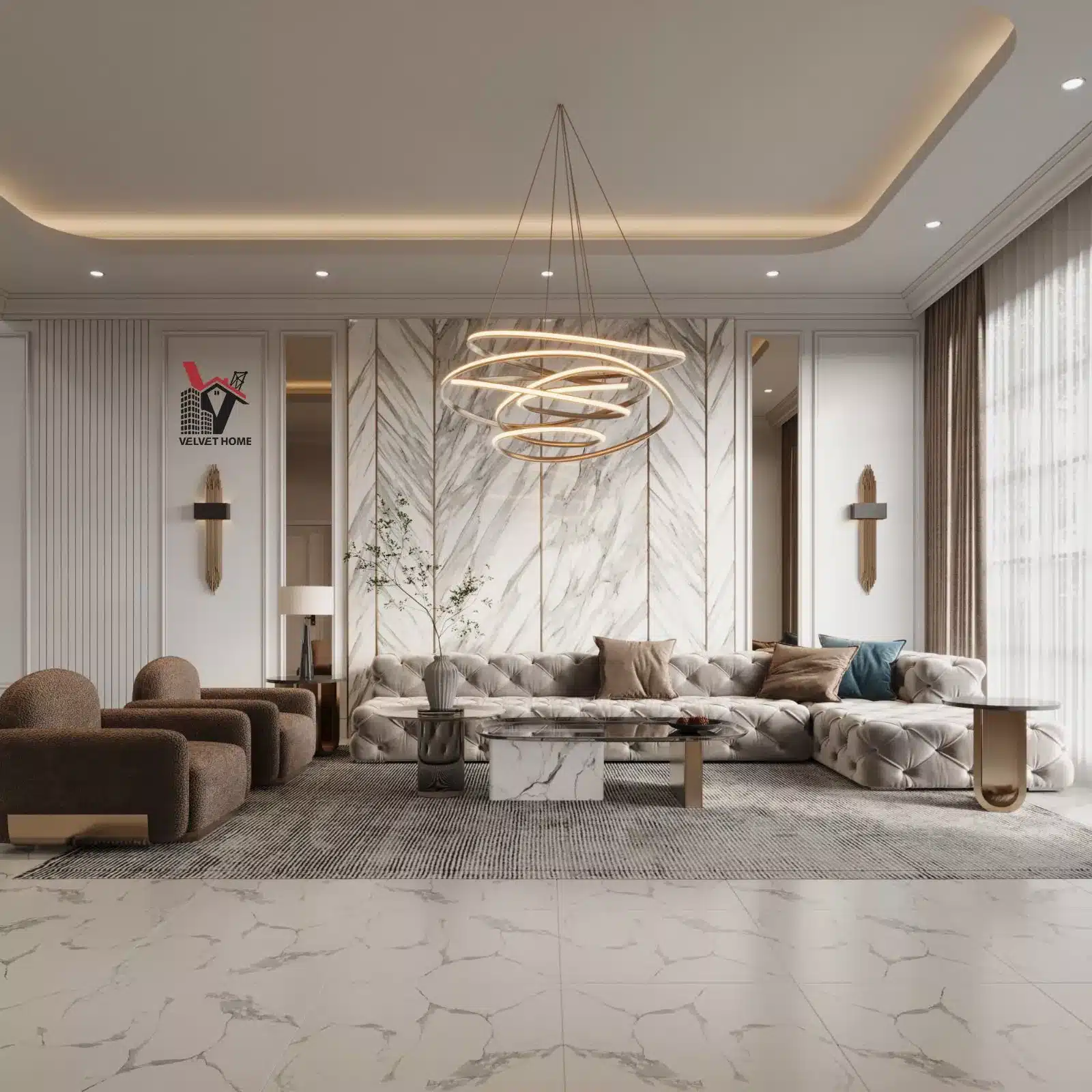
The foundation of great interior design rests on several key principles:
- Balance: Creating visual equilibrium through symmetrical, asymmetrical, or radial design.
- Rhythm: Guiding the eye through repetition, progression, or transition of elements.
- Cohesion in design: The seamless integration of elements to create a unified visual narrative throughout a space.
- Proportion and Scale: Maintaining proper size relationships between objects and the space.
- Emphasis: Drawing attention to focal points in the room.
- Contrast: Creating visual interest through juxtaposition of different elements.
- Unity: Ensuring the overall design feels purposeful and cohesive.
Understanding and applying these principles is crucial for creating well-designed spaces that are both functional and aesthetically pleasing.
2. The Impact of Color in Interior Design
Color wields transformative power in interiors, orchestrating emotions, shaping perceptions, and defining spatial functionality with its silent language.
- Psychological Impact: Warm colors (reds, oranges, yellows) create energy and coziness, while cool colors (blues, greens) promote calmness and relaxation.
- Space Perception: Light colors can make a room feel larger and more open, while dark colors can create intimacy and coziness.
- Functionality: Color can define areas within a space, creating visual boundaries in open-plan layouts.
- Brand Identity: In commercial spaces, color plays a crucial role in reinforcing brand identity.
- Cultural Significance: Colors can have different meanings in various cultures, an important consideration in the diverse UAE market.
When selecting a color scheme, consider factors such as natural light, intended use of the space, and existing elements that need to be incorporated.
3. The Role of Lighting
Lighting is often referred to as the “jewelry” of interior design, serving both functional and aesthetic purposes:
- Types of Lighting:
- Ambient lighting: Provides overall illumination
- Task lighting: Illuminates specific work areas
- Accent lighting: Highlights particular features or objects
- Natural vs. Artificial Light: Balancing natural and artificial light sources is key to creating a well-lit, comfortable space.
- Mood Setting: Lighting dramatically affects the mood of a space.Lighting choreography: Soft, warm hues cocoon spaces in comfort, while crisp, cool tones invigorate and energize the atmosphere.
- Energy Efficiency: With growing environmental concerns, energy-efficient lighting solutions are becoming increasingly important in interior design.
To learn more we advise you to read our article about Light Design in Home
4. Texture and Materials
The tactile and visual qualities of materials play a significant role in creating depth, interest, and comfort in a space:
- Visual Texture: How a surface looks, even if it’s not actually textured (e.g., a wallpaper with a wood grain pattern).
- Tactile Texture: How a surface feels, adding depth and interest to surfaces.
- Material Selection: The choice of materials impacts not only aesthetics but also durability, maintenance, and sustainability.
- Layering: Combining different textures and materials adds depth and interest, creating a rich, multidimensional environment.
- Contrast: Juxtaposing different textures (smooth vs. rough, matte vs. glossy) can create visual interest and highlight specific elements.
5. Space Planning
Effective space planning is the backbone of successful interior design:
- Functionality: Ensuring the space meets the practical needs of its users.
- Spatial choreography: Crafting intuitive pathways that guide inhabitants through a space with effortless grace and purpose.
- Zoning: Defining areas for different activities within a larger space.
- Adaptability: Incorporating design principles that allow for evolving needs over time.
- Ergonomics: Considering human factors to create comfortable, efficient spaces.
6. Interior Design for Homes
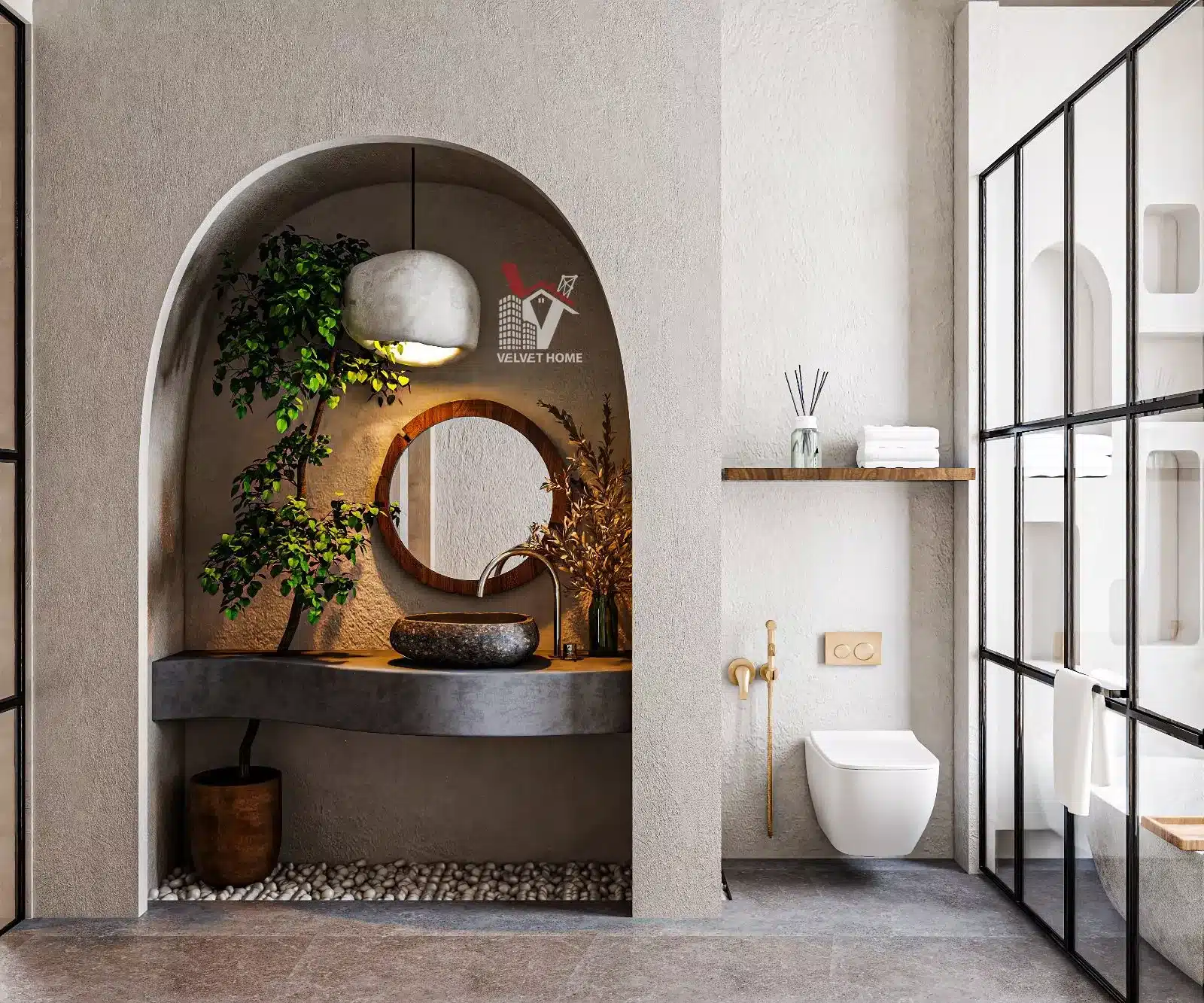
Home interior design is deeply personal, reflecting the lifestyle, preferences, and personalities of its occupants:
- Living Room: Balance comfort with style, consider traffic flow and conversation areas.
- Kitchen: Focus on the work triangle (stove, sink, refrigerator), adequate storage, and proper lighting.
- Bedroom: Create a restful environment with soothing colors, textures, and appropriate storage solutions.
- Bathroom: Balance functionality with spa-like aesthetics, focusing on proper ventilation and durable materials.
- Home Office: Design for productivity with ergonomic setups, storage solutions, and proper lighting to reduce eye strain.
To learn more we advise you to read our article about Interior Design for a Home
7. Office Interior Design
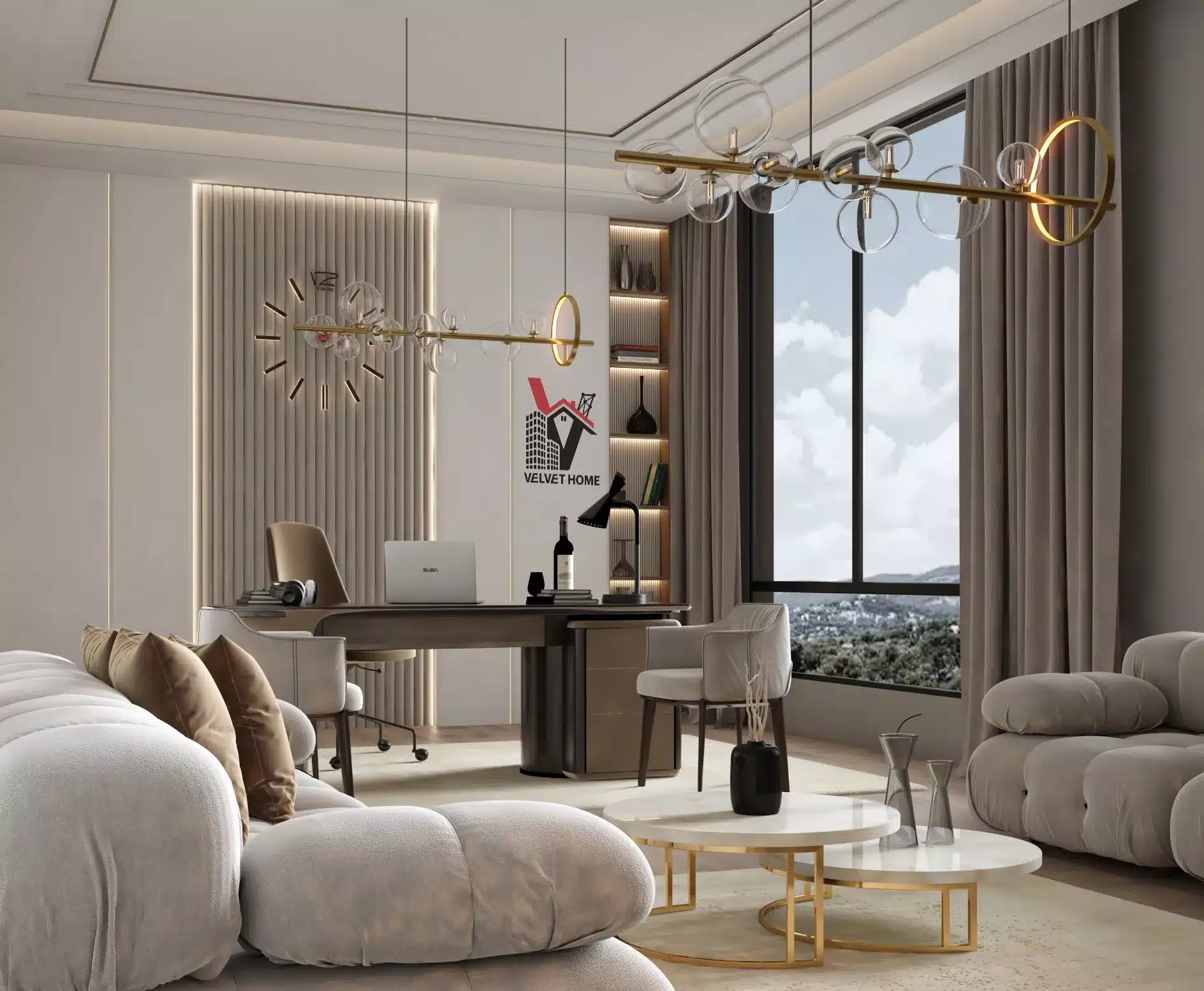
The design of office spaces has evolved significantly, with a growing focus on employee well-being, flexibility, and collaboration:
- Open vs. Private Spaces: Finding the right balance between collaborative open areas and spaces for focused work.
- Flexibility: Incorporating modular furniture and multi-purpose spaces to adapt to changing needs.
- Well-being: Prioritizing employee wellness through ergonomic furniture, biophilic design, and dedicated relaxation areas.
- Technology Integration: Ensuring seamless integration of necessary technology for efficient work processes.
- Brand Reflection: Using design elements to reinforce company culture and values.
To learn more we advise you to read our article about Offices Design in dubai
8. Coffee Shop Design
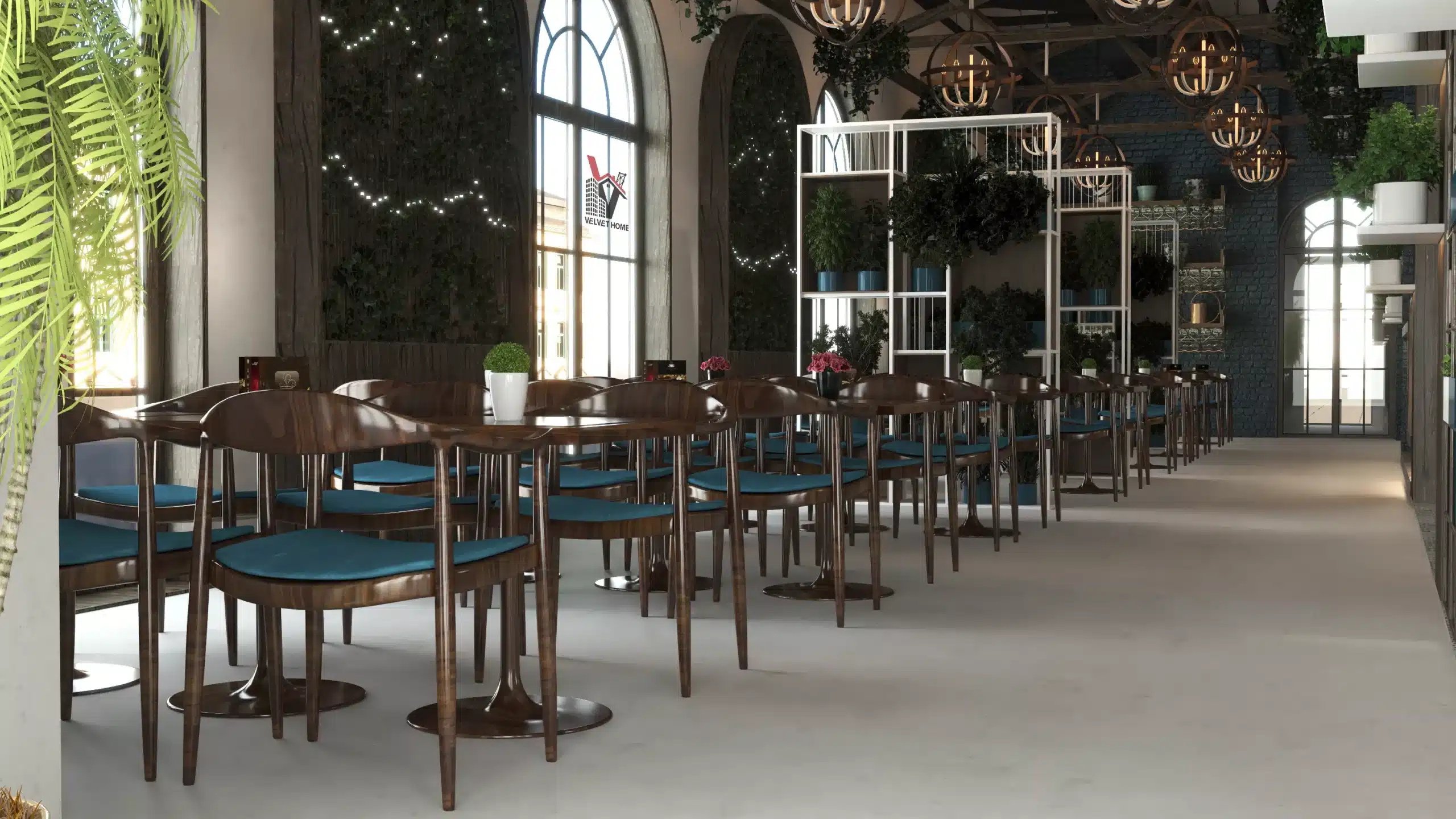
Coffee shops have become social hubs and workspaces, requiring thoughtful design:
- Atmosphere: Creating the right ambiance through lighting, color schemes, and seating options.
- Functionality: Designing for efficient customer flow and comfortable barista workspaces.
- Branding: Incorporating brand elements into the design to create a unique identity.
- Acoustics: Managing noise levels to create a pleasant environment for conversation and work.
- Versatility: Providing various seating options to accommodate different customer needs and lengths of stay.
To learn more we advise you to read our article about Interior Design for a Coffee Shop
9. Villa Design in the UAE
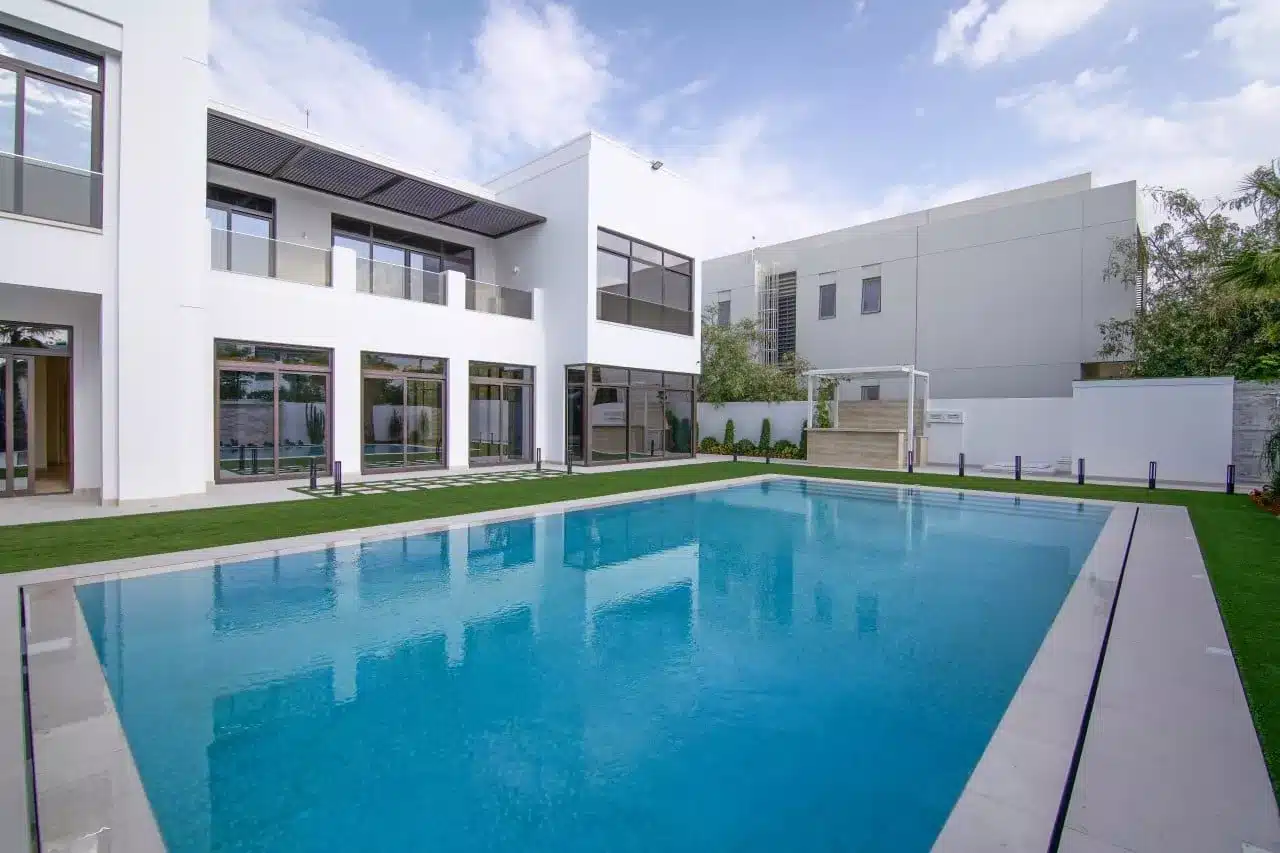
Villa design in the UAE often involves creating a luxurious blend of traditional and modern elements:
- Grand Entrances: Making a striking first impression with features like double-height foyers or statement staircases.
- Open Plan Living: Designing spacious, flowing living areas that facilitate entertainment and family gatherings.
- Indoor-Outdoor Connection: Creating seamless transitions between interior spaces and outdoor areas like patios, pools, and gardens.
- Luxury Amenities: Incorporating features like home theaters, wine cellars, or spa bathrooms.
- Climate Considerations: Designing for the UAE’s hot climate with proper insulation, shading, and cooling systems.
To learn more we advise you to read our article about interior design villa
10. Sustainable Interior Design
The green revolution in interiors: Embracing eco-conscious design principles to create spaces that nurture both inhabitants and the planet.
- Energy Efficiency: Using energy-efficient appliances, lighting, and HVAC systems.
- Sustainable Materials: Opting for eco-friendly materials like reclaimed wood, recycled glass, or low-VOC paints.
- Water Conservation: Implementing water-saving fixtures and systems, particularly important in the UAE’s arid climate.
- Indoor Air Quality: Prioritizing materials and systems that promote clean, healthy indoor air.
- Waste Reduction: Considering the lifecycle of materials and designing for longevity and recyclability.
11. Technology in Interior Design
Advancements in technology are reshaping interior design:
- Smart Home Systems: Integrating automated lighting, climate control, and security systems for convenience and energy efficiency.
- Virtual and Augmented Reality: Using VR and AR for realistic design visualization and client presentations.
- 3D Printing: Employing 3D printing for custom furniture and decorative elements.
- Internet of Things (IoT): Incorporating connected devices for enhanced functionality and user experience.
- Sustainable Tech: Utilizing technology to monitor and optimize energy usage in buildings.
12. Cultural Influences in UAE Interior Design
The UAE’s rich cultural heritage and international influences create a unique design landscape:
- Islamic Geometric Patterns: Incorporating traditional patterns in modern contexts.
- Arabic Calligraphy: Using calligraphy as both decorative and meaningful design elements.
- Majlis-inspired Spaces: Creating modern interpretations of traditional gathering spaces.
- Global Fusion: Blending local traditions with international design trends.
- Hospitality Focus: Emphasizing generous, welcoming spaces reflecting Emirati hospitality.
Marketing Paragraph for Velvet Home
When it comes to turning your interior design dreams into reality, Velvet Home stands at the forefront of excellence in the UAE. With a keen eye for detail, a passion for innovation, and a commitment to client satisfaction, Velvet Home transforms spaces into personalized works of art. Their team of experienced designers combines local cultural understanding with global design trends, creating interiors that are both timeless and contemporary. Whether you’re looking to redesign your home, office, or commercial space, Velvet Home offers bespoke solutions that reflect your unique style and meet your specific needs. From concept to completion, they handle every aspect of the design process with professionalism and creativity. Experience the Velvet Home difference and let them help you create spaces that inspire, comfort, and delight. Visit velvet home to start your journey towards a beautifully designed space today.
To calculate the cost or request a design, we have provided a website that makes the process easy for you. You can visit it here.
13. Conclusion
Interior design is a dynamic field that combines creativity, functionality, and technical expertise. Whether designing a cozy home, a productive office, a welcoming coffee shop, or a luxurious villa, good interior design has the power to transform spaces and enhance the lives of those who inhabit them.
In the UAE, interior designers face unique opportunities and challenges, balancing traditional influences with modern trends, and addressing specific climate considerations. By understanding and applying the principles outlined in this guide, designers can create spaces that are not only beautiful but also functional, sustainable, and culturally relevant.
As we move forward, the integration of technology, the growing emphasis on sustainability, and the continued fusion of global and local design elements will shape the future of interior design in the UAE and beyond.
For those looking to bring their interior design visions to life in the UAE, consider consulting with professional designers who understand the local context and can provide tailored solutions to meet your specific needs and preferences.






[…] To learn more we advise you to read our article about The Art of Interior Design for Every Space […]
[…] To learn more we advise you to read our article about The Art of Interior Design for Every Space […]
[…] To learn more we advise you to read our article about The Art of Interior Design for Every Space […]
[…] To learn more we advise you to read our article about The Art of Interior Design for Every Space […]